Nelson Lakes, New Zealand
Less Visited Gems of the South Island
March, 2016
Click on any image for a larger view;
Contact garya at this domain if you would like the high quality image for printing
We left the West Coast heading for
Abel Tasman Park.
Our friends in Charlestown had recommended we go by way of
Nelson Lakes National Park,
a less-visited part of the South Island.
It was a slower route, with roads that wound through some pretty country.
We followed the
Buller River
for a ways,
and it looked like a great spot to do some fishing or boating.
It is the largest river on the South Island,
and has some well-known white-water in the Buller Gorge.
We took it easy and enjoyed the scenery and the winding road.
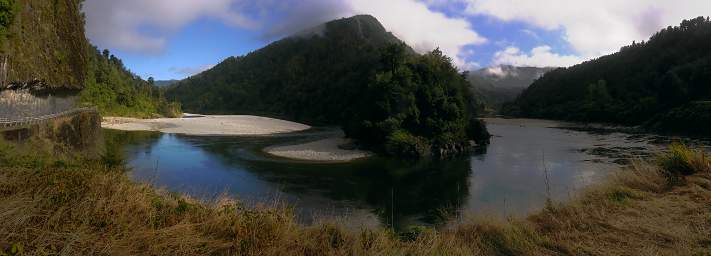 |
| Buller River |
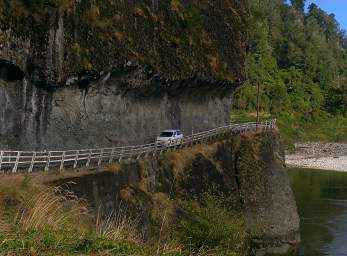 |
| Buller River Road |
Nelson Lakes National Park has some great hiking.
We stopped for lunch and hiked through the Beech forest up lake Rotoiti to Rata Bay.
It was uncrowded, peaceful, and relaxing.
We stopped for lunch on a pebble beach,
enjoying the bird-song and the warm sunny weather.
The birds were frustrating,
as we could hear them everywhere, but had real trouble seeing them.
The Nelson Lakes are notorious for sandflies,
but we were fortunate not to encounter any.
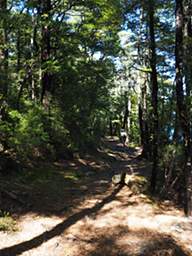 |
 |
Beech Forest
Photo by Dona |
Beech Tree
Photo by Dona |
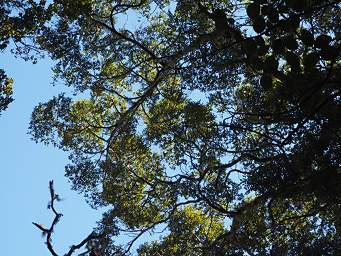 |
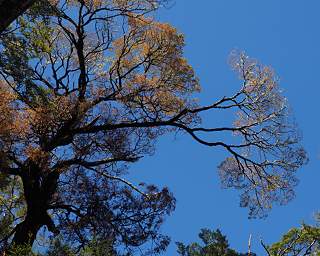 |
Beech Tree
Photos by Dona |
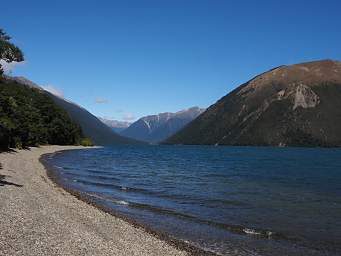 |
Lk Rotoiti
Photo by Dona |
Along the way, we learned of this
cool example of nature's wild inter-connectedness.
In the beech forests, there are small scale insects that live in and under the bark of the beech trees.
The bug has a very long anal tube which protrudes out of the bark into the air;
it looks like a fine hair.
The bugs excrete a small drop of sweet honeydew that accumulates on the tip of the tube,
and that dewdrop is highly sought after by birds and insects,
including honey-bees.
It is edible, and tastes like sugar-water.
Native birds such as Tui and Bellbirds love it,
and it is a food source which is available throughout the year.
Much of the honeydew drips onto the bark and the forest floor,
where it promotes the growth of a black fungi.
The fungi is obvious everywhere -- many trees are totally black and covered in it.
The fungi is a food source for small insects,
which are in turn another source of food for birds.
 |
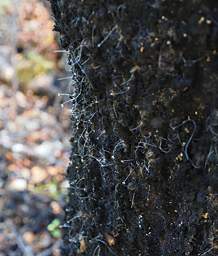 |
| |
Photo by Dona |
| Beetle Honey Drops |
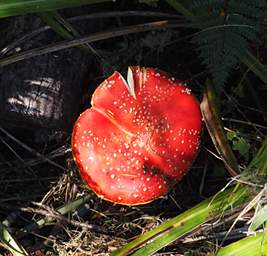 |
Mushroom
Photo by Dona |
Our stay at Nelson Lakes was way too short,
but we had plans to hike along the shore in Abel Tasman park,
so we continued on our way.










